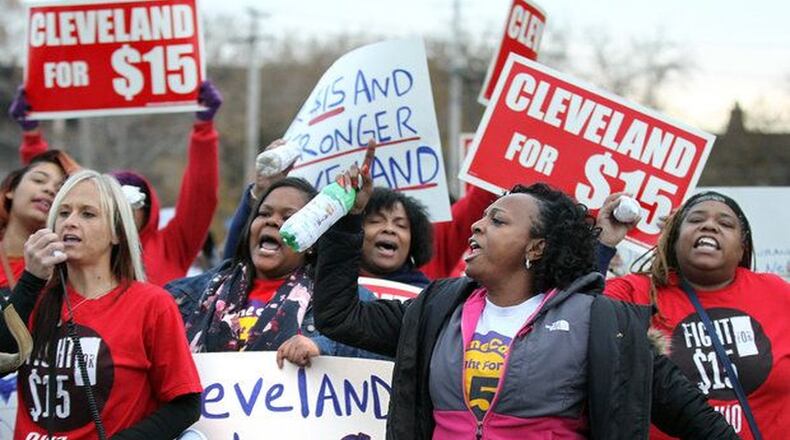Don Boyd, director of labor and legal affairs for the Ohio Chamber of Commerce, said “Generally speaking, we believe the free market should set the minimum wage, not the government.”
Boyd added that boosting the minimum wage could lead to job losses and higher prices for consumers.
Related: Study finds boosting minimum wage could lead to job losses
Still, state Sen. Joe Schiavoni, D-Boardman, said, “I’ve been down here for nine years. You got to start somewhere. You got to start putting pressure on people. You got to have the conversations.”
In 2006, Ohio voted 56.65 percent to 43.35 percent in favor of a constitutional amendment that set the state minimum wage at $6.85 an hour and tied future annual increases to inflation. It exempts workers under 16 and small businesses.
Ohio’s minimum wage for 2018 is $8.30 an hour.
Related: Ohio’s minimum wage inches up 15-cents per hour for 2018
The federal minimum wage, which is $7.25 an hour, was last increased in July 2009.
Eighteen states — Ohio among them — began 2018 with higher minimum wages, including 11 states that did so through legislation or ballot issues, according to the National Conference of State Legislatures. California, New York and the District of Columbia each have plans in place to increase the minimum wage to $15 an hour over time.
Nationwide, 29 states and D.C. set minimum wages above the federal minimum wage. Five southern states have not adopted a state minimum wage.
Related: Report shows nearly 100,000 Ohioans earning less than minimum wage
The plan is to increase Ohio’s minimum wage to $12 an hour in 2019 and raise it 50 each year until it hits $15 an hour in 2025, said state Rep. Brigid Kelly, D-Cincinnati.
Hannah Halbert of Policy Matters Ohio, a left-leaning research think tank, said while Ohio’s economy has grown more than 65 percent in a generation, the poorest 30 percent of workers have lost buying power with their wages since 1979.
“The bottom line is wages in Ohio are just too low. A family of three with the sole breadwinner, again, working full-time year-round at minimum wage would earn $3,500 below the poverty line,” Halbert said. “Raising the age to $15 by 2025 would just simply restore some of the lost purchasing power, helping working families and increasing local spending.”
Raising the minimum wage would mean household income could go up for 700,000 children. “That’s a big deal in a state where one in five children are being raised in poverty,” Halbert said.
About the Author

